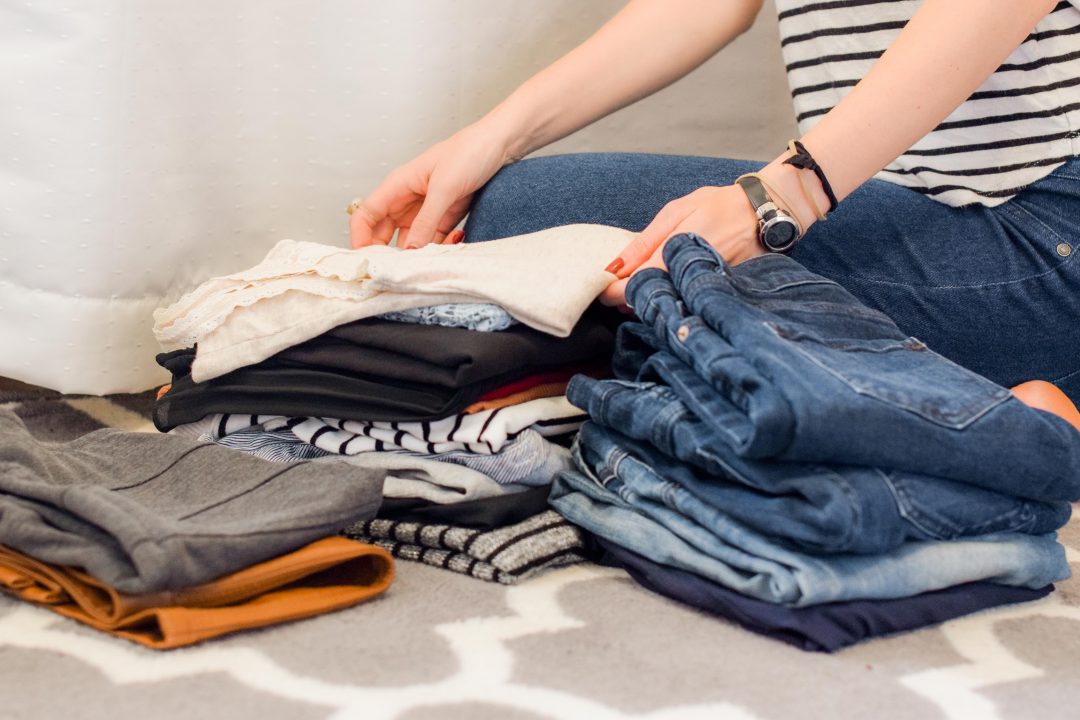Wow! I felt a collective shudder as I wrote that blog title. Marie Kondo lies? Never! That cute little cardiganed imp? NEVER!
If you don’t already know who Marie Kondo is, she’s an organization expert (some might say wizard) who became a household name after writing the best-selling book “The Life-Changing Magic of Tidying Up: The Japanese Art of Decluttering and Organizing”. Netflix produced a show called “Tidying up with Marie Kondo” in early 2019 and both the US and the UK reported increased charity donations because of it.
This adorable and inspirational woman created the KonMari method which is her methodical approach to declutter category-by-category (e.g. all clothing, all books) rather than room by room. You start by gathering all of that category, starting with clothing, from every closet, garage box, etc and then you evaluate each item individually, keeping only those that spark joy. The others, you thank for their service and donate or dispose. Those that spark joy are neatly folded, organized by category, or arranged in a tidy manner that typically allows for joyful items to be on full display in your home.
I’m exaggerating when I say she lied, but I do think she’s oversimplified the process and here’s why.
1. Not everything you’re going to keep sparks joy.
I’ll admit I’ve crossed paths with some efficient toilet brushes in my day, but I dare say not one of them sparked joy and during the decluttering process, I kept it anyway.
There are lots of household items like this that are just useful. KonMari fans will try to convince you that while of course the toilet brush doesn’t spark joy, the way you feel after using it is what sparks joy. Um…I guess so? Scrub, scrub, scrub. Nope. Still no sparks.
Keep the practical, useful, daily/weekly/monthly use items.
2. It’s weird to thank every item for its service.
I know I have so much to be thankful for and I wanted to follow the KonMari process….I wanted to thank those things that I was letting go, but those extra buttons from shirts long gone? They didn’t even help me with anything.
That skirt that never fit right but I missed the 30-day return window? The free St. Jude’s custom address labels that keep piling up since all bill payments are now online? I couldn’t bring myself to thank them. It felt a bit ridiculous.
On the other hand, my worn out CheapTrick tee from 1992? Thank you, I don’t know how to repay you for your service!
When purging once favorite, but worn out or no longer used items, it can make you feel better, but don’t make it weird.
3. A few things are ok to save for later.
What do scrapbooking supplies and my “fat” jeans have in common? Only that I’m not currently using them and in the future, I don’t want to re-purchase either.
I have plans…big plans…for those scrapbooking supplies during retirement. Someday they’ll spark joy.
On the other hand, I hope to never need my “fat” jeans again, but realistically, I can go down two sizes and up one from where I am now in less than 18mo. It seemed wasteful to throw them out just because they’re not currently in rotation.
Stay strong when sorting, but use common sense. The goal is to downsize, eliminate the excess, and organize, but if there’s a good chance you really will use them in the future, it might be less wasteful to keep them.
4. More than one pass is likely.
Marie preaches that you can through your house one time and then you’re done. Also, her method means you’ll touch the item once, keep if it sparks joy and discard/donate if it doesn’t.
For 80% of items this is probably true as they’re either torn, broken, never used, your favorite, or used regularly. However, sentimental items, clothes, and paper (which she claims can all be found online) are particularly difficult to completely resolve in one pass.
You may not have worn that formal gown in 2 years but if this year’s holiday party is formal, you’ll be sorry you discarded. In a second pass though, you’ll realize you don’t need all 5 formal gowns so you can pick 2 and complete the task as best you can.
I doubt you picked up your highschool yearbook and newspapers you saved as the editor, thanked them for their service and threw them out. Instead you flipped through them, decided they sparked joy, but laughed at the thought of displaying them on your coffee table so you put them back in the dark box and pretended you’d never grabbed them at all. During a second pass though, you decide to keep all the yearbooks, only the best example of an edited newspaper, and you give yourself permission to have a keepsake box that’s not continually on display since hopefully, 80s hair is never coming back.
Your birth certificate? Won’t find it online as Marie claims, so stalled out. You could scan it and throw it out, but it just feels wrong so you save the original certificate, failing the KonMari method, but happy with the decision.
Cut yourself some slack. If you eliminate 80% of the clutter on the first pass, you’re doing great. If you pair down another 10% on pass two, rejoice. You’re far better off than you were when you started.

BEFORE 
GATHERING DONATIONS 
FIRST DONATION PICK-UP 
AFTER
While we didn’t strictly follow the KonMari method, with the exceptions above we used Kondo’s framework to declutter and move to a minimalist lifestyle, downsizing from a 2100 sq. ft. home to a 200 sq. ft RV plus a 100 sq. ft. storage unit and so far, we haven’t missed a thing!
























 Did you know that the oldest and largest aviati
Did you know that the oldest and largest aviati
